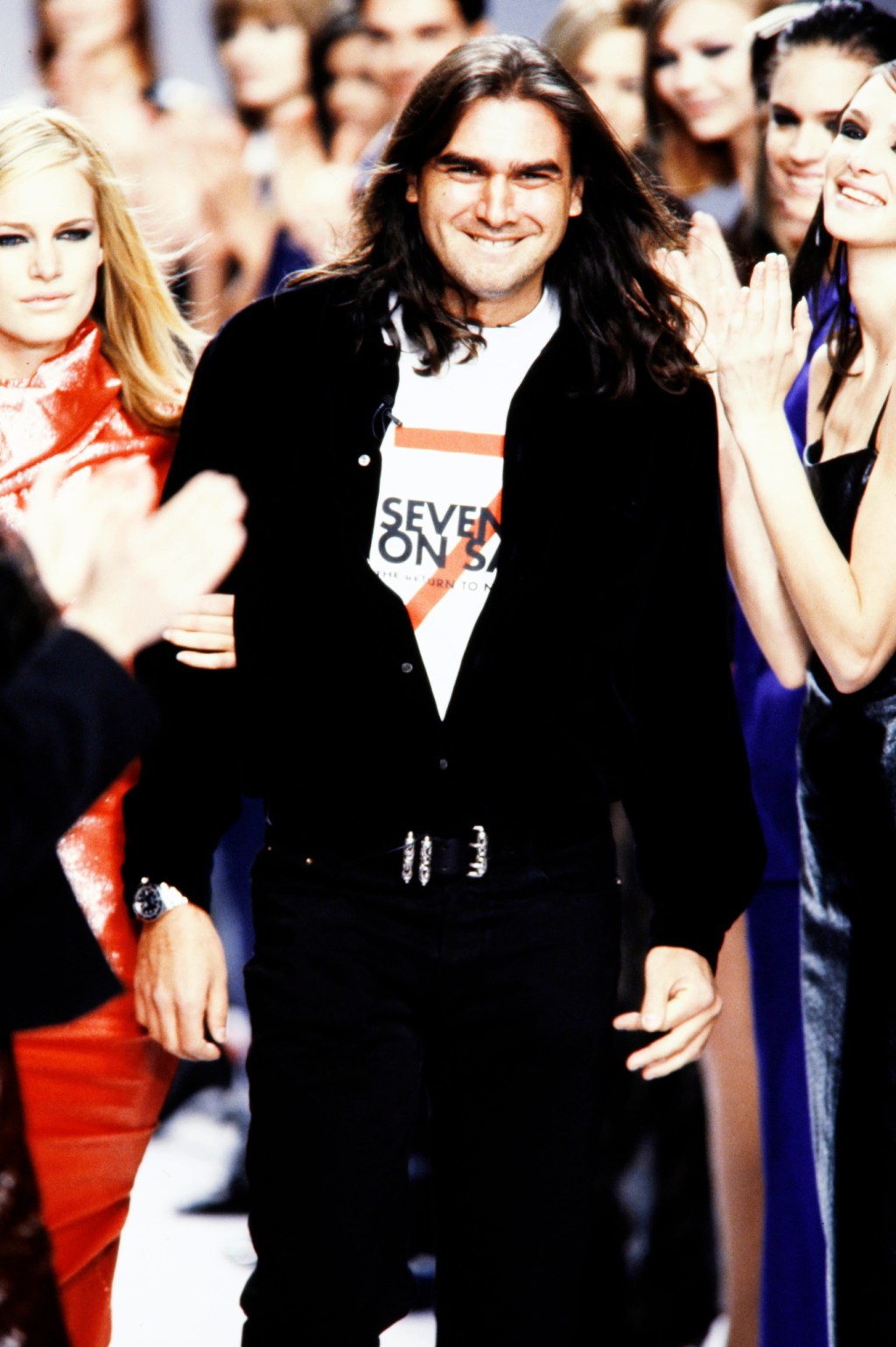Mark Eisen, who was a leading fashion designer in the ’90s before venturing into art, has died at age 65.
Services were held last week for Eisen, who died on Nov. 17 at his home in Great Barrington, Mass. The family has not disclosed the cause of death, according to Jared Vorster, a family spokesperson, who also worked with Eisen for about the past 10 years.
After being an influential American designer in the ’80s and ’90s, Eisen exited the fashion world. He moved back part-time to his homeland South Africa in 2007, where he bought and renovated a 17th-century French Huguenot wine farm. In addition to making wine, Eisen used that time on the farm to focus on industrial design for the luxury group Compagnie Financière Richemont. Eisen also simultaneously pursued his art as a sculptor.
Born in Cape Town, Eisen moved to the U.S. at the age of 19 to attend the University of Southern California, where he studied business. As an undergraduate, he designed a Trojan-type hat akin to the school’s mascot that was sold nationwide, at a time when USC was a number-one athletic collegiate force. The sales helped land him a job with a real estate developer, but boredom set in and he turned his attention more to fashion. In 1988, he was honored with the “Alumni of the Year” award from the University of Southern California Business School and the following year, he was nominated as the “California Designer of the Year.”

“Mark was very much about that this world needed more positivity and light, and through that you could bring joy. A lot of Mark’s ethos was gratitude, joy and light,” Vorster said. “For him, it was less about look-world-I’ve-accomplished-this and more, I enjoy doing these things and creating. That would lead to whatever it leads to, but he was not doing it for recognition.”
Eisen started his company in 1982 on the West Coast. After deciding on a whim one day in the mid-’80s to spray paint color blocks on the denim outfit he was wearing, Eisen was inspired to create a collection that wouldn’t fade — a marked difference from the sea of acid-washed jeans that were all the rave at that time. Bergdorf Goodman and Barneys New York picked up his first “Couture Denim” collection in the spring of 1988 and volume reached $1 million in a year. Knowing closets aren’t filled solely with jeans, he ventured into other fields and disproved naysayers who had dismissed him as a denim designer. Eisen initially ran his business in Venice, Calif., creating what he called “classic American luxury womenswear.” After crisscrossing the country between Los Angeles and New York City, he opened a New York design studio in 1993 and moved his headquarters to Manhattan in 1998.
His dexterity as a designer could be seen in the FiFi-award-winning fragrance bottles Icon for Alfred Dunhill and Emblem for Montblanc and Worldstar packaging-awarded bottles for Protea from A.Rupert Wines. He once headlined an Absolut vodka advertisement with the tag line “Absolut Eisen.” He also designed a Harley Davidson apparel collection and created custom looks for The Rolling Stones, The Who’s Pete Townsend and Faith Hill for her closing ceremony performance at the Atlanta Summer Olympic Games. Eisen also was recruited one year to decorate the White House Christmas tree, when Bill and Hillary Clinton resided there.

With his wide smile and curtain of long black hair, Eisen conveyed a certain energy that was synonymous with independent young fashion designers. In 1996, the designer added the contemporary knitwear label Urchin and Urchin Knits, which was sold to 470 stores in the U.S. It was later renamed Urchin Mark Eisen. Eisen also once had a licensed collection in Japan called Studio Mark Eisen and a diffusion line, George Me, that was sold to Walmart for a period of time. In his prime, the designer had design studios in New York, Italy, Japan and Hong Kong. His collections sold for 18 years in more than 800 stores in 18 countries.
Eisen was also a presence at New York Fashion Week for 12 consecutive seasons in the ’90s. He remained a voting member of the CFDA. The organization’s former executive director Fern Mallis described him as “a great talent, a terrific designer and such a special person,” who was very active in the Jewish community in South Africa. Establishing himself and gaining fame in the industry along with other up-and-comers like Charlotte Neuville, Karl Logan, and Body Glove’s Robin Piccone, Eisen, like some of his peers, later retreated from the fashion scene.
Mallis and Eisen recently reconnected over lunch in New York City for the first time in years. “Beyond delighted” to hear from Eisen out of the blue a month ago, Mallis said, “He was so proud of what he was doing. massive sculptures that were expensive to produce. But he was exhilarated by it. He said that he had found his calling. I was going to help connect him with some galleries and some people for publicity. He was so optimistic and happy. He was excited to come back to New York again.”

In 2000, Eisen struck up a 50-50 partnership with Sportswear Co. SpA, the Italian firm behind the C.P. Company and Stone Island labels, to produce and distribute the Mark Eisen Collection. That same year he licensed footwear with Lerre. At that time, Eisen’s company was a $20 million entity.
In 2006, Eisen’s life took another turn when he married his wife Karen, whom he had met four years before. The couple went on to raise two children, and family life became his primary devotion.

In the mid-2010s, Eisen began mining his personal archive with the intention of creating sculpture. In his artworks, there are key concepts and forms that had been developed over nearly three decades as a designer. Attuned to the interplay of light and space, his creations were full of color and made with simple geometric spaces, including overlays. (His fashion collections had used such unexpected fabrics as laminated chiffon, and resin-coated, sparkly rayon crepe.
His artworks, whose complexity often required the help of artisans to execute, also show where patternmaking, tooling, material, architecture and technology fuse. A typical day consisted of dreaming and creating. “There are very few people, who we come across in the world, who don’t just have ideas, but vision to turn it into a reality,” Vorster said.
Eisen is survived by his wife, his two children Abigail Eloise and Cameron Harry, as well as his two sisters Merle and Linda.



